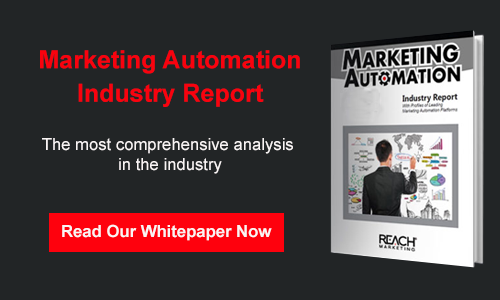Too often, organizations look at marketing only in terms of cost while ignoring revenue. Given that the point of marketing is to drive revenue, that makes little sense, yet defining the value of marketing spend has traditionally been difficult to estimate – let alone quantify precisely. The key to knowing how your marketing makes you money is attribution, and understanding attribution takes technology. Marketing automation tools let you know what’s driving revenue so you can correlate marketing to revenue directly.
Just over 80 percent of marketers surveyed expect their digital marketing spend to increase in 2016, according to the latest RSW/US New Year Outlook Report. That’s an increase over the $60 billion spent last year on digital advertising. With this much of a financial investment at stake, it’s no wonder businesses are searching for a way to know which activities produce the most revenue, which are the most reliable profit producers, and which just waste your marketing team’s efforts.
Attribution is the key to understanding your money-makers, but tracking it has historically been difficult. How do you know what contributes to a site visitor’s decision to become a buyer instead of a window-shopper? How can you determine which content contributed the most to that decision? What were the greatest influences and friction points a customer faced along the sales pipeline, and can those be extrapolated to other leads along the buyer’s journey? Attribution gives us the answers, but only with the right technology.
First and Last – Simple Attribution
The simplest models of attribution are first-touch and last-touch attribution. In first-touch attribution, marketers make the assumption that the first contact point a lead has with a given company is the most influential. Last-touch attribution gives credit to the most recent impression. Marketers knew there were more influencing factors in the mix, but sorting them out wasn’t possible without more sophisticated tracking methods. Simpler models of attribution can still be useful as a snapshot of activity, but they aren’t typically the best indicators of where your marketing revenue comes from.
By themselves, first-touch and last-touch attribution models don’t tell a complete story; they’re just the “once upon a time” and “happily ever after” without any of the information between them. To know the rest of the story, you need multi-touch attribution.
Meaningful Multi-Touch Attribution
Potential buyers, especially in B2B contexts, draw on a huge range of information as they make buying decisions. They read content from various sources during fact-finding missions, compare products, and interact with the most promising candidates before choosing. Multi-touch attribution tracks the interest of these buyers by their behavior over time so each station along the buyer’s journey gets earmarked as a revenue producer or flagged as an inessential component of buying decisions.
The modern model of the sales pipeline is full of holes. Leads pour into it at all stages of sales readiness, and they exit it just as quickly to gather more information. Marketing automation software is able to map this diffusion into and out of the pipeline to create a meaningful image of how people progress over time from browsing to fact-finding to comparisons to contacting sales. Time is a critical component of multi-touch attribution because it records every contact, not just the first and last, that a lead has with you. That knowledge not only informs how that lead’s decisions were made, but also how to weigh the real value of other marketing activities over time.
Attribution puts marketing expenditures into the larger context of revenue drivers, showing you and your marketing team where to focus your efforts and quantifying the value of your choices.
© Reach Marketing LLC 2016 All Rights Reserved.







